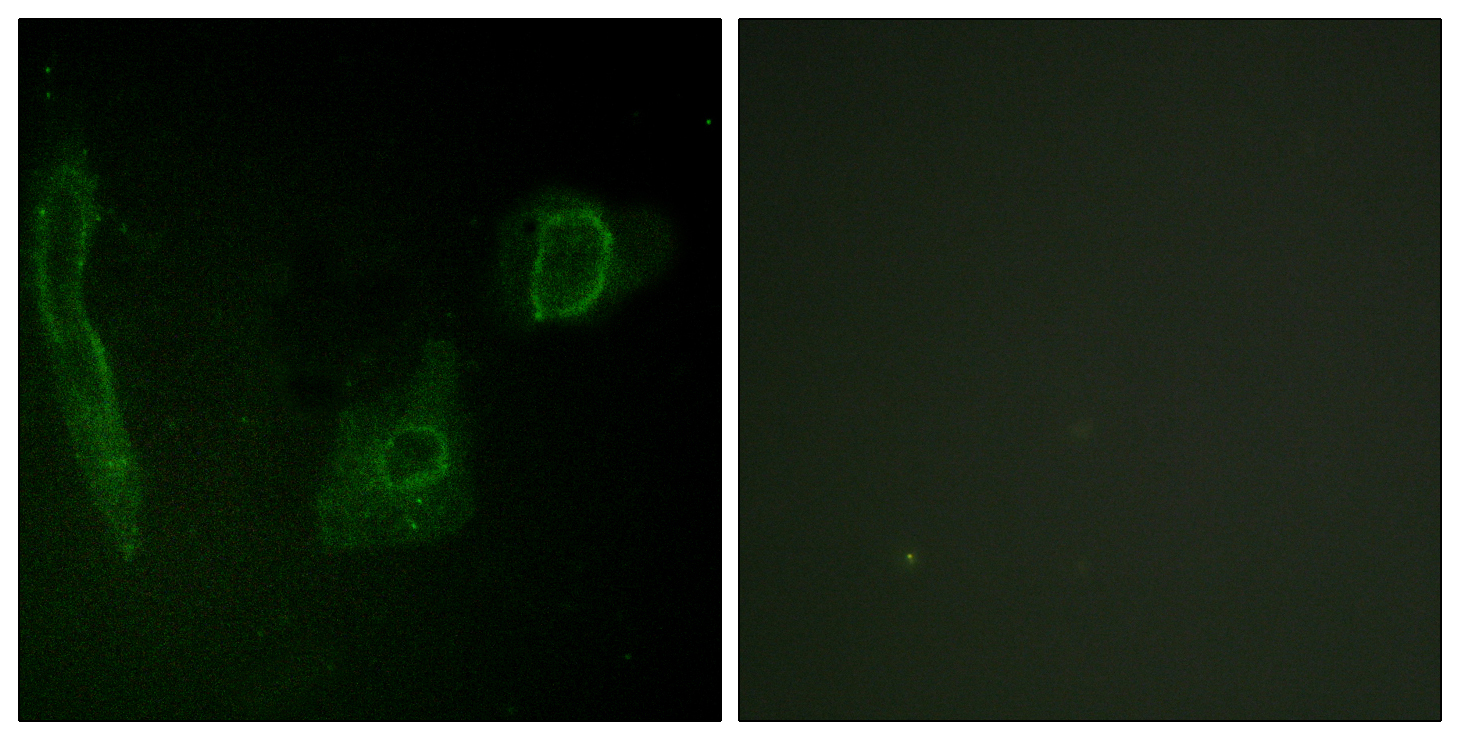
Immunohistochemical staining of formalin fixed and paraffin embedded human brain tissue section using anti-ALK rabbit monoclonal antibody (Clone RM361) at a 1:1000 dilution.
anti-ALK (human), Rabbit Monoclonal (RM361)
REV-31-1247-00
ApplicationsWestern Blot, ImmunoHistoChemistry
Product group Antibodies
ReactivityHuman
TargetALK
Overview
- SupplierRevMAb Biosciences
- Product Nameanti-ALK (human), Rabbit Monoclonal (RM361)
- Delivery Days Customer10
- ApplicationsWestern Blot, ImmunoHistoChemistry
- CertificationResearch Use Only
- ClonalityMonoclonal
- Clone IDRM361
- Gene ID238
- Target nameALK
- Target descriptionALK receptor tyrosine kinase
- Target synonymsALK1, CD246, NBLST3, ALK tyrosine kinase receptor, CD246 antigen, anaplastic lymphoma receptor tyrosine kinase, mutant anaplastic lymphoma kinase
- HostRabbit
- IsotypeIgG
- Protein IDQ9UM73
- Protein NameALK tyrosine kinase receptor
- Scientific DescriptionALK was a novel receptor tyrosine kinase (RTK), having an extracellular ligand-binding domain, a transmembrane domain, and an intracellular tyrosine kinase domain. While the tyrosine kinase domain of human ALK shares a high degree of similarity with that of the insulin receptor, its extracellular domain is unique among the RTK family in containing two MAM domains (meprin, A5 protein and receptor protein tyrosine phosphatase mu), an LDLa domain (low-density lipoprotein receptor class A) and a glycine-rich region. Following binding of the ligand, the full-length receptor ALK dimerizes, changes conformation, and autoactivates its own kinase domain, which in turn phosphorylates other ALK receptors in trans on specific tyrosine amino acid residues. ALK phosphorylated residues serve as binding sites for the recruitment of several adaptor and other cellular proteins, such as GRB2, IRS1, Shc, Src, FRS2, PTPN11/Shp2, PLCgamma, PI3K and NF1. Other reported downstream ALK targets include FOXO3a, CDKN1B/p27kip, cyclin D2, NIPA, RAC1, CDC42, p130CAS, SHP1 and PIKFYVE. Phosphorylated ALK activates multiple downstream signal transduction pathways, including MAPK-ERK, PI3K-AKT, PLCgamma, CRKL-C3G and JAK-STAT. The receptor ALK plays a pivotal role in cellular communication and in the normal development and function of the nervous system. Oncogenic ALK is expressed and used as a marker in anaplastic large-cell lymphomas (ALCLs) and non-small-cell lung cancer (NSCLC). - Recombinant Antibody. This antibody reacts human total ALK protein including ALK fusion proteins. Applications: WB, IHC. Source: Rabbit. Liquid. 50% Glycerol/PBS with 1% BSA and 0.09% sodium azide. ALK was a novel receptor tyrosine kinase (RTK), having an extracellular ligand-binding domain, a transmembrane domain, and an intracellular tyrosine kinase domain. While the tyrosine kinase domain of human ALK shares a high degree of similarity with that of the insulin receptor, its extracellular domain is unique among the RTK family in containing two MAM domains (meprin, A5 protein and receptor protein tyrosine phosphatase mu), an LDLa domain (low-density lipoprotein receptor class A) and a glycine-rich region. Following binding of the ligand, the full-length receptor ALK dimerizes, changes conformation, and autoactivates its own kinase domain, which in turn phosphorylates other ALK receptors in trans on specific tyrosine amino acid residues. ALK phosphorylated residues serve as binding sites for the recruitment of several adaptor and other cellular proteins, such as GRB2, IRS1, Shc, Src, FRS2, PTPN11/Shp2, PLCgamma, PI3K and NF1. Other reported downstream ALK targets include FOXO3a, CDKN1B/p27kip, cyclin D2, NIPA, RAC1, CDC42, p130CAS, SHP1 and PIKFYVE. Phosphorylated ALK activates multiple downstream signal transduction pathways, including MAPK-ERK, PI3K-AKT, PLCgamma, CRKL-C3G and JAK-STAT. The receptor ALK plays a pivotal role in cellular communication and in the normal development and function of the nervous system. Oncogenic ALK is expressed and used as a marker in anaplastic large-cell lymphomas (ALCLs) and non-small-cell lung cancer (NSCLC).
- ReactivityHuman
- Storage Instruction-20°C
- UNSPSC12352203


![IHC-P analysis of human rhabdomyosarcoma tissue section using GTX03298 ALK antibody [4A4].](https://www.genetex.com/upload/website/prouct_img/normal/GTX03298/GTX03298_IHC-P_1_w_23053123_133.webp)



